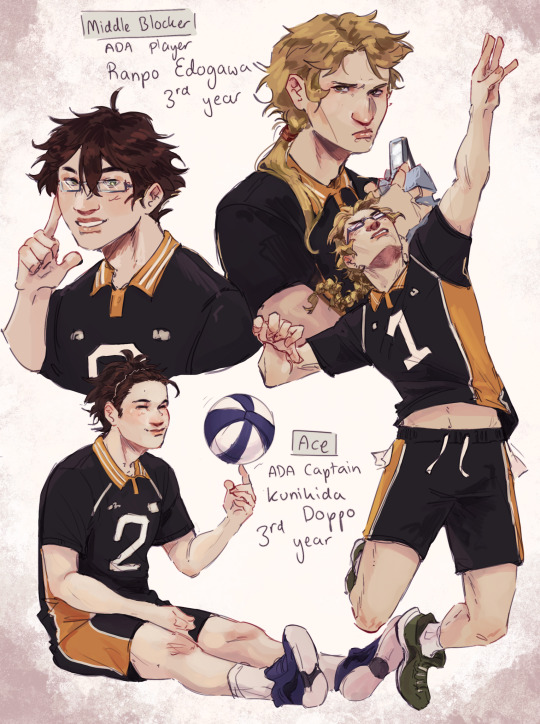#heart block
Explore tagged Tumblr posts
Text

Scrappy Heart Block by Corey Download the Scrappy Heart Block PDF Pattern here HTTPS://CORIANDERQUILTS.COM/WP-CONTENT/UPLOADS/2023/05/SCRAPPY-HEART-BLOCK.PDF
#crafts#gifts#decor#sewing#quilting#briar rose quilts#bedding#shopping#quilters of tumblr#hearts#scrappy quilt block#scrappy quilt#heart block#scrappy heart#coriander quilts#corianderquilts.com#heart pattern#quilt block pattern
0 notes
Text

mwah
#my art#jujutsu kaisen#jjk#jjk fanart#jujutsu kaisen fanart#itafushi#fushiita#yuji itadori#fushiguro megumi#hiiiiiii sorry long time no draws i finally finished megumi's birthday piece and it knocked me OUT#so here is a recovery itfs smooch page. as a treat#itd been so long since id drawn yuuji at this point hdgsdd#gojo piece into 2 back to back megumi pieces that took probably a collective 2.5 weeks#crazy how fast the rust sets in with this kid#i think hes ok tho !!! it's always hard when one of them is standing in front of the other and blocking the Key Piece Of Hair#the one i lean on to carry the silhouette recognizability.....sighs#such is the peril of drawing smooch#anyway its always itfs friday in my heart so pls enjoy#this is brought to you by Thumb On Mouth#sequel to Hand On Thigh
4K notes
·
View notes
Text
0 notes
Text

Maximum effort on something that only has context in my brain ✌🏻
#what if you scared the shot out of your homie by playing dead#and while he’s freaking out you lean over him and put you hands all over him#and his heart is racing#and you’re both stupid#mollymauk tealeaf#caleb widogast#widomauk#I will block people that ship fight in my tags I’m so serious#artist on tumblr#doobles#digital scribbles#cr
1K notes
·
View notes
Text

this is the vibe from here on out
made in 2025
#fix your hearts or die#david lynch#linocut print#linoprint#linocut#printmaker#block print#printmaking#block printing#artists on tumblr#small artist#traditional printmaking#traditional printing#traditional art#lesbian artist#butch artist#trans artist#trans art#lgbt art#lgbt#leftist art#linocarving#original art#linogravure#disabled artist#art#twin peaks
1K notes
·
View notes
Text

Pineapple are in my head
Got nobody'cause I'm brain-dead
#severance#severance season 2#helena eagan#helly r#mark s#mark scout#this show has my brain and heart#i'm suffering some art block issues#and had to do somekind of a collage or something#to have my brain work again#i'm afraid it's not working correctly#ANYWAY PLEASE WATCH SEVERANCE IT'S A GOOD SHOW
553 notes
·
View notes
Text


them and their shit❤️



#cult of the lamb#cotl#my art#cotl narinder#cotl lamb#narilamb#cotl toww#cotl fanart#cotl kallamar#cotl leshy#cotl heket#cotl shamura#cotl shitten#shitten oc#aria shitten#artists on tumblr#sketches#i heart domestic narilamb#like yes king do the dishes and fall asleep on the couch together#doodles#i also really like how i drew heket in this tbh#i think aria would look up to her most#i did these a few weeks ago but never got around to posting them😓#generally pretty busy and having some crazy art block these past weeks but im hoping to get back into it and post more frequently!!#also i cant draw kallamar for the life of me holy
1K notes
·
View notes
Text

I got the beautiful RadioApple print signed by Jeremy Jordan and Amir Talia as a birthday present from my husband.
I’m obsessed.
#radioapple#hazbin hotel#lucifer morningstar#appleradio#alastor the radio demon#I blocked out my name but Jeremy wrote it and put a lil heart 🥺
426 notes
·
View notes
Text

hand printed muslin & felt patches 🌿
etsy
#mine#my art#art#patches#printmaking#lino#block print#hearts#witchy#whimsigoth#cottagecore#naturecore#slow fashion#nature#tattoo design#artists on tumblr
849 notes
·
View notes
Text
Examining the Rose bush garden.

something something something about hairstyles and how Red/Quinn's hair is mostly loose while the queen only has her bangs loose and blah blah blah LOOK AT THIS.
#disney descendants#my art#art#rewrite#red descendants#red of hearts#queen of hearts#bridget descendants#rise of red#im proud of every part of this#the background#the foreground#the characters#the SCEPTER#LOOK AT THAT HEART JEWEL#LOOK AT IT#I DID THAT#lots of the red of quinns color pallet is blocked by her arms being cross but shhh#also slightly changed her shoe design#i will be begging for comments please i spent almost the whole day on this
407 notes
·
View notes
Text


can i be cured of art block?!!
#utmv#undertale#undertale aus#i lov error#error sans#ink sans#doodlesphere#human error sans#geahhhdhddnfi#art block#kms#underverse i was listening to soulless heart while drawing the doodlesphere#evidently#i think my art looks a lot better when#i slow down and appreciate the process#rather than working towards the end result#and when i csre less about hkw it looks#if i wanna scribble-paint the doodlesphere then i shall 😡
437 notes
·
View notes
Text
Neil Gaiman, let’s be realistic. A 21-year-old working in the home of a man four decades her senior cannot truly give meaningful consent to any type of sexual encounter, let alone within mere hours of meeting him. Even though you are denying it was not consensual, the fact you have conceded the sexual encounter did happen at all is a full confession. You are, by your own admission, a predator.
#neil gaiman#tw sa#cw sa#tw power imbalance#my heart goes out to his victims and to the people who found comfort in his work#sorry you have all been failed by a man who should have protected you - not preyed on you#i believe victims!!!#sa tw#abuse tw#power imbalance#trying to hit this with as many tags as possible because i don't know what triggering tags people have blocked#and i want to be respectful here of survivors
783 notes
·
View notes
Text

[insert sick guitar riff]
----------------------------------------


+ linocut version! (rough test print) and alt version w/ runes
I'm making hand-printed patches for my upcoming ko-fi shop (which you can find here pspspsps 👀👀) hopefully launching in the next month or so <3
#holy shit it's not a cat#thank u discord friends and also roby for hyping this up#its been fun getting to work with physical materials again :') i've been doing digital for so long i've missed this#always wanted to do patch design so this heals part of my sad baby alt kid heart loool#sleep token#sleep token fanart#linocut#printmaking#block printing#elkk.art
352 notes
·
View notes
Text


MORE VOLLEYBOYS AU
#was so torn between making ranpo a pinch server or middle blocker#but tendou style guess blocking is so him#kunikida is the ace because he’s dazais new quick partner#drammmmmaaaa#also he’s captain because he deserves it#Libero kenji is true in my heart and soul#junichiro middle blocker because light snow acts like a screeennnnnnn oooooo#bsd#bungo stray dogs#bungou stray dogs#doppo kunikida#ranpo edogawa#tanizaki junichirou#miyazawa kenji
1K notes
·
View notes
Text

lonely dog
#itlwart#inthelittlewood fanart#inthelittlewood#martyn inthelittlewood#martyn itlw#secret life#life series#i heart<3 drawign blocks it's fun#arty#1K⁉️#WHATTHAHELL‼️‼️
2K notes
·
View notes
Text

heinrich, der wagen bricht
#why is this so much edgier than my usual art i watched all three pitch perfect movies while drawing this#dont love how this turned out but ive been art blocked which always happens during semester break so its nice i finished it at all lol#my art#oc art#cw anatomical heart#stma
189 notes
·
View notes